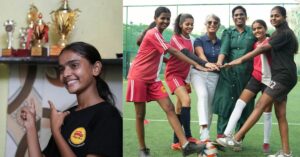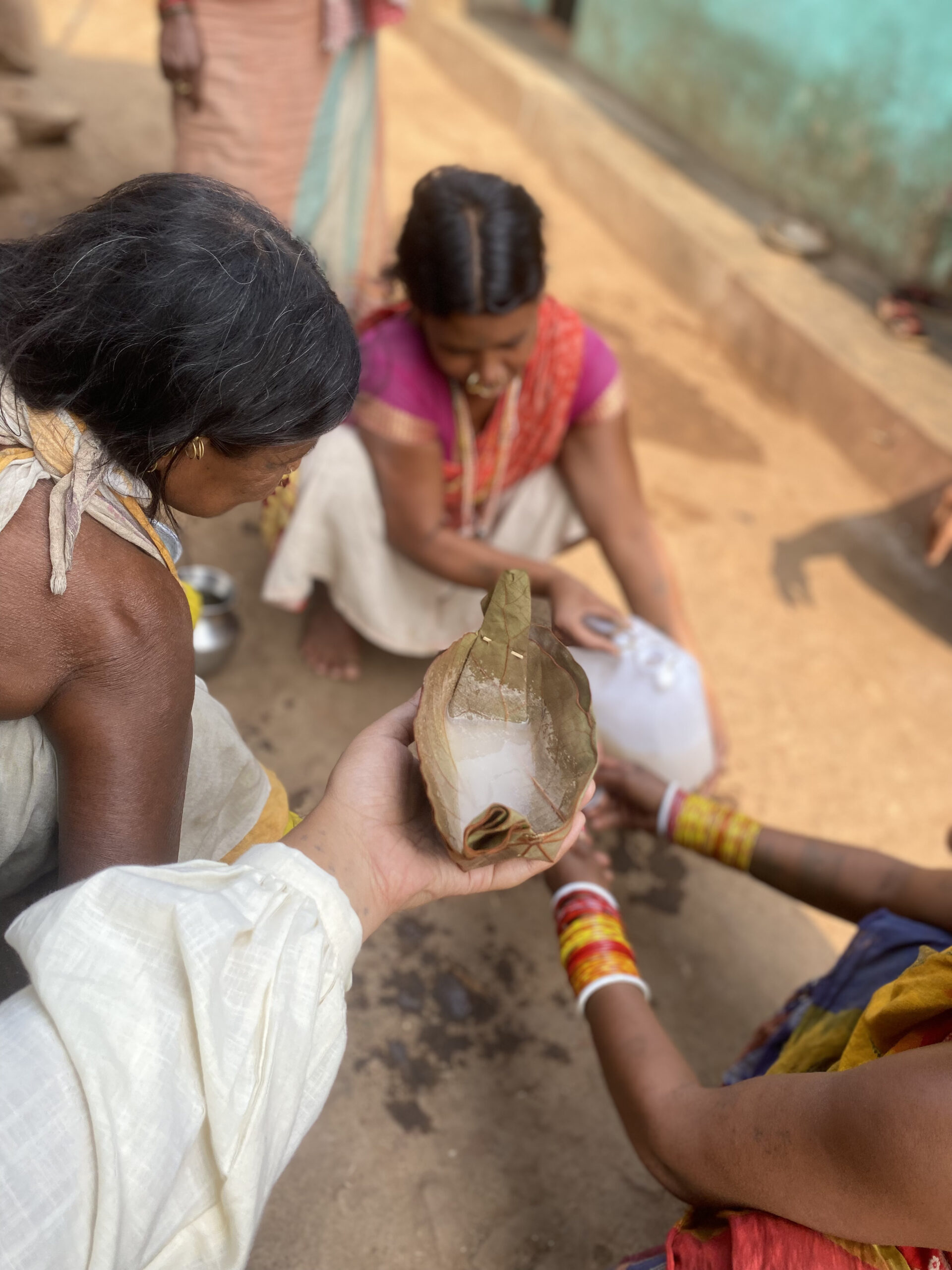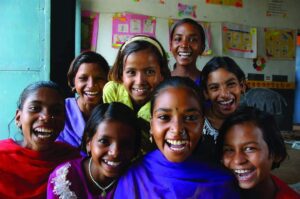I Left City Life for an Odisha Village; Here’s What I Learned About Sustainable Cooking
Kavya Saxena, who left her lucrative job in Gurugram to live in India’s tribal villages, shares what she has learned from their culinary practices and history, and how she’s working to empower the people she has met along the way.
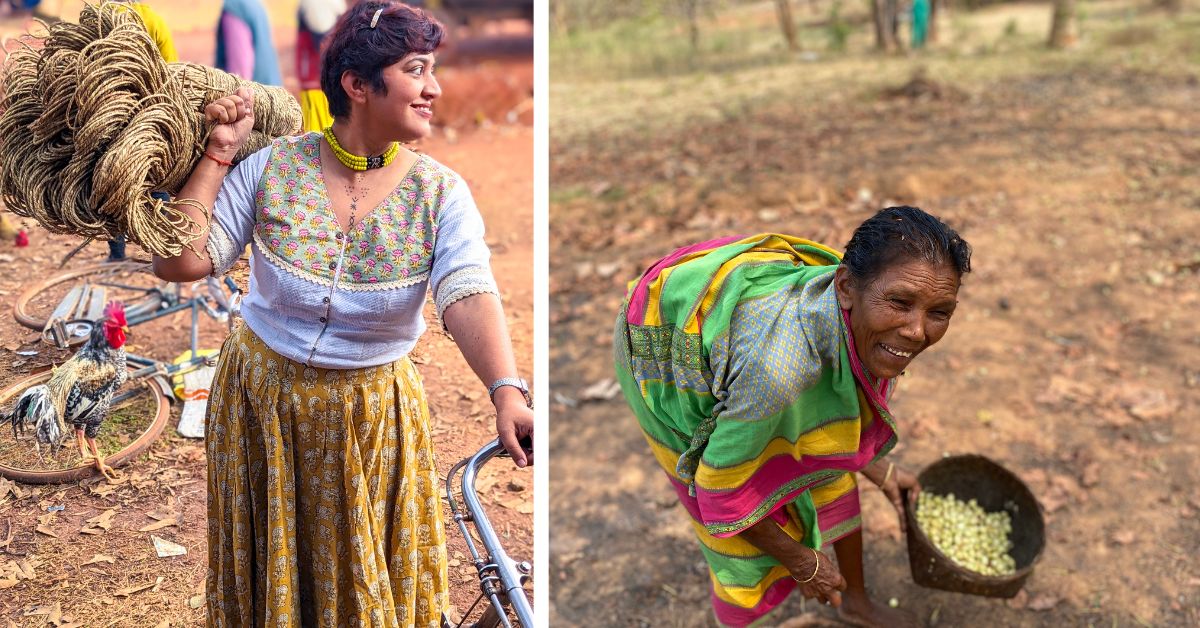
As you make your way through Western Odisha along the Koraput belt, near Rayagada, to the Niyamgiri Hills, the trees around you will start getting dense. The location, though remote, is one that holds an entirely different world within it.
If you visit the forest area at sunset, a novel sight will greet you — a cluster of tribal folk wrapping up their day that began in the wee hours of the morning with farming. It is now their leisure time, and they spend it engaging in folk music, while the aroma of smoked meat wafts through the air.
This is the Dongria Kondha tribe, one of the 62 Particularly Vulnerable Tribal Groups of India (PVTG), classified by the Constitution as being completely dependent on forest produce.
In one of the remotest areas in the country, where one wouldn’t expect to find many city folk, in the midst of the tribes sits 35-year-old Kavya Saxena. She chats with the people around her, calls them by name, and appears to have known them for years. She has.
For Kavya, it has been a long day too. While her role here involves being a bridge between the tribes and city markets, helping the former find buyers, she says her work extends beyond that.
While she now resides in the Niyamgiri Hills, in a forest on the border of Odisha and Chhattisgarh, and is associated closely with the Dongria Kondha and Bonda tribes, she had never imagined this would be her life.
Sustainable Cooking: ‘One day, I decided to leave the city behind’
It’s 2018. At a major fashion house in Gurugram, Kavya is wrapping up a meeting. She has calls to make, executive decisions to take, and trends to set, but what she’s really looking forward to is her upcoming vacation.
Kavya, you see, has an interesting hobby.
“People love going to beaches and scenic locations, but no one visits rural India as they feel these areas might be unclean. I loved discovering what these villages had to offer, and would frequent them sometimes as a hobby and other times as part of work.”
In October 2020, this love for villages would turn into a solo project. Through #KavyaOnQuest, she would explore the villages of India and document their crafts. She planned to carry it on for a few months before she’d have to return to her job.
In July 2021, when it was time to embrace city life once again, Kavya decided not to. After 12 years of being in corporate leadership roles, she realised it was time to listen to her calling.
“I made up my mind that city life was not what I looked forward to in the coming days. I wanted to learn more and live with the villagers. I wanted to take my life forward,” she says.
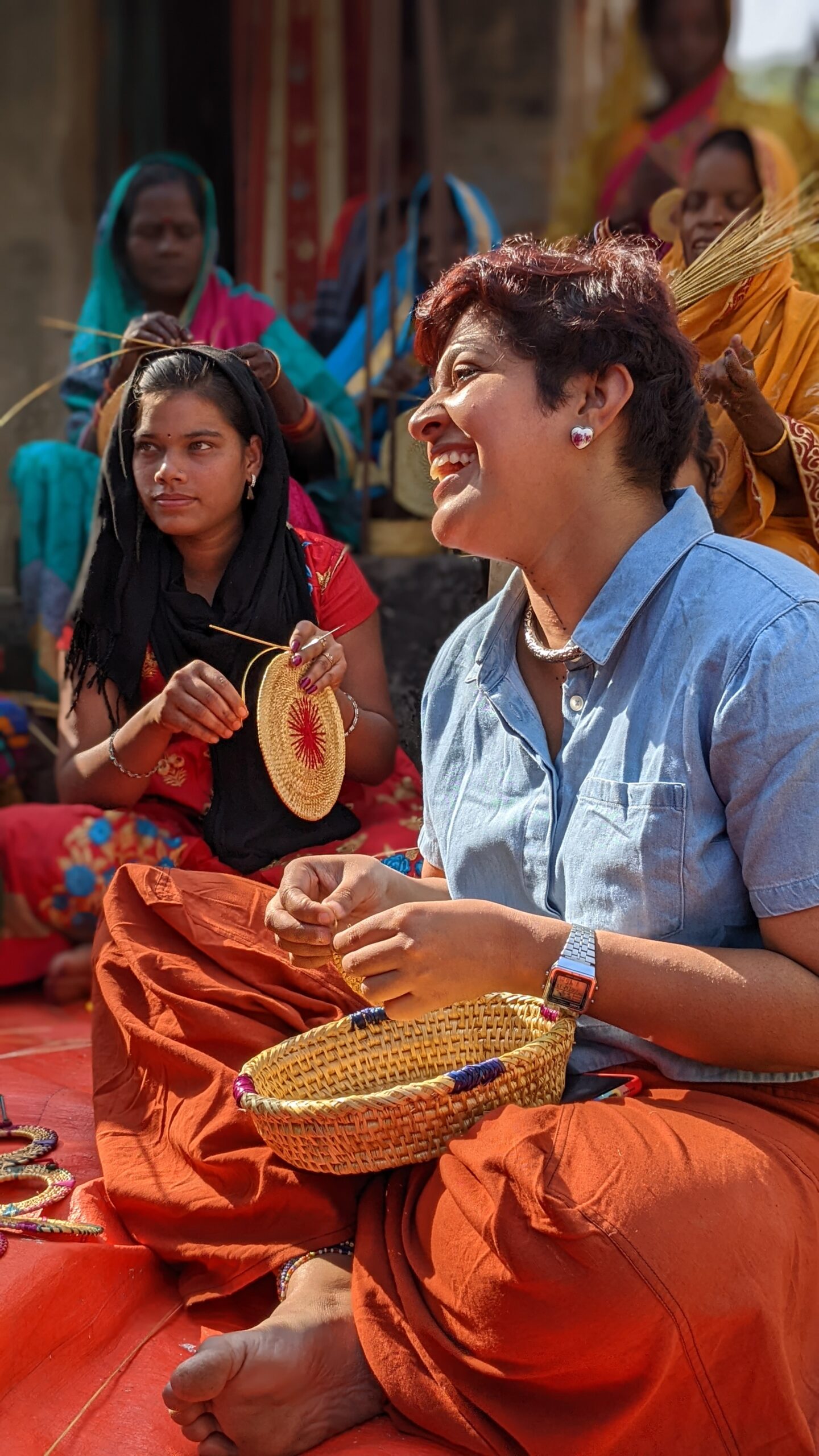
It has been a year now that Kavya has found a home in India’s remotest areas, and she sums up her unique experience in one line.
“Every day is new, every day is interesting.”
Once she made this decision to leave her city life behind, the next challenge was deciding which tribal area she wanted to move to.
As she grew up in Rajasthan, she always thought it would be easiest to move back there. “But through my travels and project, I got a sense that Eastern India too has great tribal heritage, and so I decided upon Odisha.”
“I wouldn’t go as far to say that I have adopted them,” she says. “They have adopted me.”
Sustainable Cooking: Of food and flavour
During her time with the tribes, Kavya realised that the food and practices that surround their dishes are unique. While some are focused on dietary requirements, other dishes have cultural significance. “I love the food for its simplicity,” she says, adding that all the dishes are curated with the purpose of giving them energy.
“The people here are engaged in a lot of agriculture and farming, and this expends muscle power. Whether it is their fermented liquors or their rice, it is aimed at giving them the energy to work.”
- Badi Chura
This food is prevalent across Odisha, explains Kavya. She adds that in the Niyamgiri Hills, 47 varieties of rice are grown, including kala jeera. These different kinds are ground and mixed with spices to form what is known as ‘badis’.

The badis are then eaten with mustard oil and onions.
2. Apong (rice liquor) / aara (millet liquor)
In Arunachal Pradesh — where Kavya represents native tribes through her role as president of Rural WICCI (Women In Indian Chambers of Commerce and Industry) — the Adi, Nyishi, Galo and Monpa tribes burn rice husk or millets. The resulting product is then fermented to produce the apong or the aara.
3. Handiya
This is liquor made by the Bonda, Gadaba and Kondha tribes in Chhattisgarh and Odisha, by fermenting rice. While the liquor in Arunachal is more refined due to the burning process, this liquor is cruder.
4. Smoked pork
Hunting is not something that is shamed in these tribes, explains Kavya. “Whatever they manage to get, is served as dinner,” she says. “Across Arunachal, the Apatanis, Adis and Galo tribes are lovers of smoked pork. The smoking is done as winter arrives. It is a yearly ritual and a delicacy,” she says.

She adds that the more aged the pork, the better the taste. “People even age it for 5 to 6 years and then give it as wedding gifts.”
5. Churpi
In the upper areas of Changlang in Arunachal, the Monpas and Sherdukpen tribes ferment yak milk to produce a particular variety of cheese. The product is soft, and the milky gravy is cooked with vegetables. The cheese is sometimes also left as is, and this version is hardened and chewed by the tribes like a betel nut. It helps them keep warm in winters.
Kavya also notes that tribal food and preservation techniques are very significant.
“Tribal food retains native preservation and cooking techniques. It doesn’t depend on refrigerators or microwaves, thereby giving way higher nutrients than most mindful packaged food available in cities,” she explains.
1. Grinding
The badis made from ground rice can be stored for 4 months and eaten as a side dish with the main meal. This helps retain their flavour and deepen it.
2. Sun drying
Owing to the number of rivers and seas in Odisha, the tribes make a wide variety of seafood dishes. “If you travel to Western Odisha from Chilika, the largest freshwater lake in India, you will see the number of villages that dry their fish,” she says. “The fish is put into quintals and salt is put over it. People then store this for up to a year and the fish retains its taste,” she adds.

3. Smoking
This is a preservation technique that also showcases the significance of how tribal homes are built. “Across the North East, homes have kitchens made of bamboo in the centre to keep the house warm. There is a bamboo altar in the kitchen and the pork is stretched out onto the altar,” she says. “There is a fireplace below the altar that is lit when cooking is being done, and the pork that is hung up gets naturally smoked.”
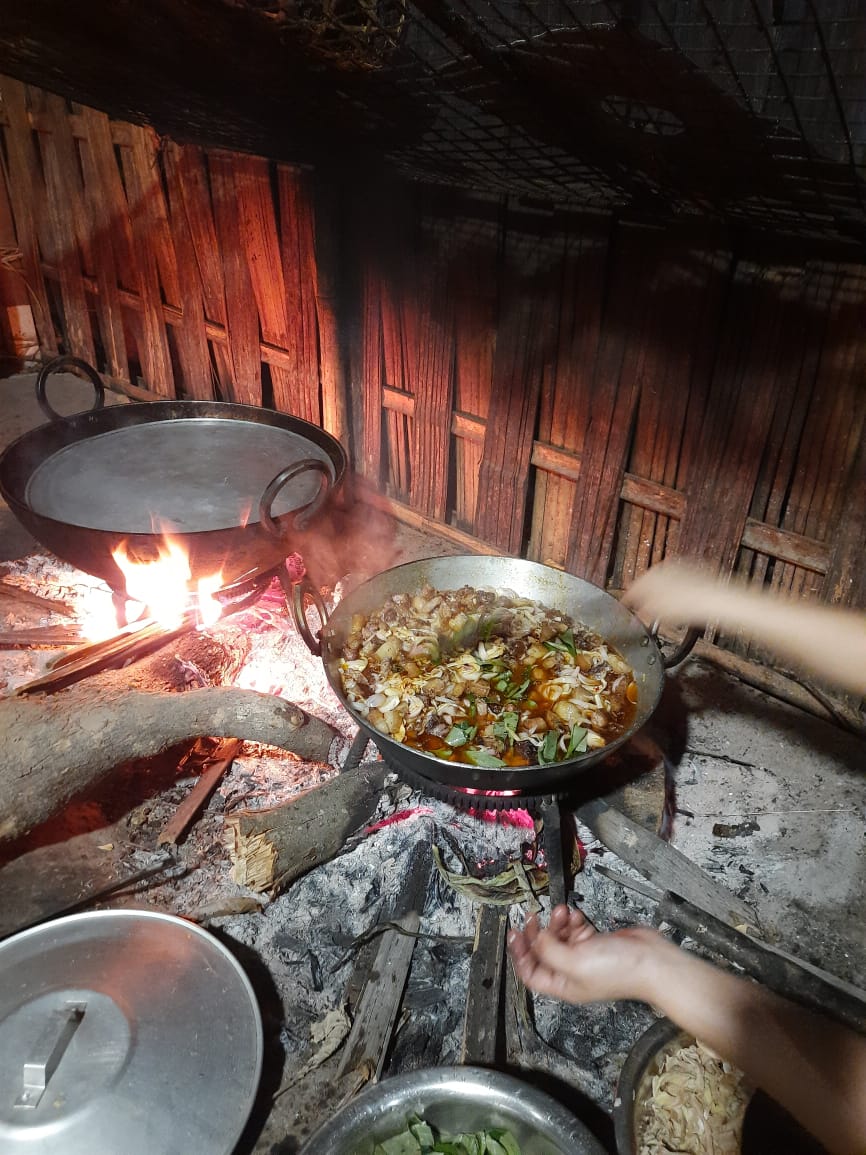
It is hung up for two months and the meat can then be preserved for around 6 years, Kavya says.
4. Burial
Practised in Odisha and Chhattisgarh, this technique is used to preserve rice for 6 months on end. “In Odisha, the summers are very hot,” says Kavya. “So an underground pit is created and covered with husks. The rice is dried and stored in grass that is made of husk. When these tightly woven grass bundles are opened, you will find rice.”
Crafting a livelihood for the tribes
Alongside the culinary practices of these tribes, Kavya has also learned a lot from the handicrafts and art. She assists them in selling their hard work through her platform Craftpotli, which she started in 2019. The group is now also working on FSSAI licensing for agricultural products.
Kavya is working with the Dongria Kondha tribes to revive a textile known as the ‘kapadagandha’. This is a traditional shawl, with triangles representing the Niyamgiri Hills and motifs representing the tribal huts and is worn by the women of the tribe.
It has an interesting story behind it.
“The sister weaves this and gives it to her brother when it’s completed. The brother then gifts it to the girl they want to marry,” explains Kavya.
However, while the weaving and embroidery would earlier be done by the tribal women, the craft started to die out, says Kavya. This was because of the number of fakes that have clouded the market.
“We have now established a system where the block development officer evenly distributes the orders among the women. This regular inflow of orders ensures the motivation to weave is constant, and there is a steady source of income. It also helps the girls stay in touch with their craft,” she says.
She says that while the products found in the mainstream markets often lack information on their sources, through her work, she is trying to offer a detailed description of how they are made.
Kavya says 70 per cent of the revenue earned from selling these products goes to the artisans, and 30 per cent goes to Craftpotli for logistics, packing, and transport.
Tripti, a member of the Kondha tribe, says, “My mother, in whose kitchen a lot of work has been done for Craftpotli, feels so proud. It has also got the village women to come together and chat in the evenings as they make these products. I feel very proud and happy.”
A journey of learnings
“Village life looks exciting in pictures, but what I have learnt is that it is very slow,” says Kavya when we ask her if the transition was easy. She says that while corporate culture teaches you to look for fast results, in rural areas, everything works on trust.
“If there are no human connections, there is nothing.”
While she has been bridging the gap between the tribes and the city markets through her platform, Kavya says she doesn’t want it to be a one-woman driven army.
“I create awareness about these initiatives whenever I travel, while also seeing to it that back in the village, things are going smoothly. I’m trying to create bigger networks in cities and bring more structure to the work we are doing in the tribal villages.”
As the sun goes lower, Kavya and the tribal folk make their way to their respective homes, with a promise to create something new the next day.
If you wish to browse through the products, you can do so here.
This story made me
- 97
- 121
- 89
- 167
Tell Us More
We bring stories straight from the heart of India, to inspire millions and create a wave of impact. Our positive movement is growing bigger everyday, and we would love for you to join it.
Please contribute whatever you can, every little penny helps our team in bringing you more stories that support dreams and spread hope.







